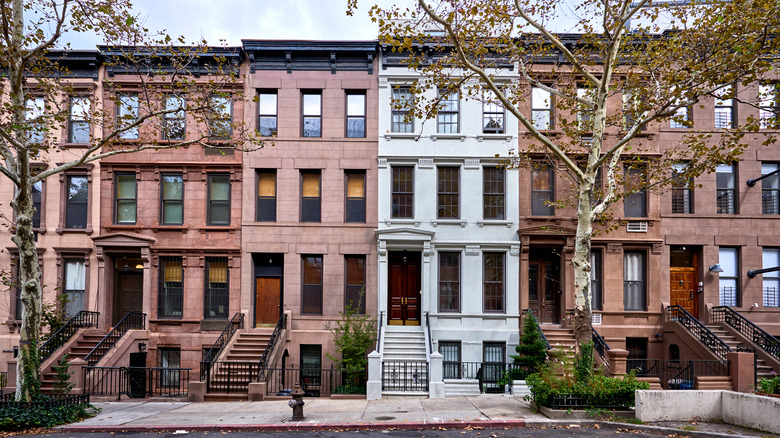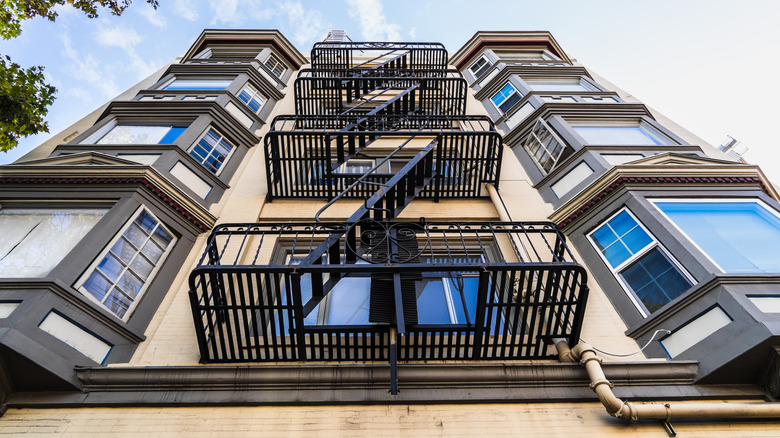What Does It Really Mean When Your Apartment Is Rent Controlled?
If you have a rent-controlled apartment, it might be best to stay there. Often associated with metropolitan areas like New York City, rent-controlled apartments have been around since the early 20th century. Dating back to the 1920s, rent control is a price regulation placed on residential apartment dwellings within a city or state. Legally, a landlord is limited to how much the rent can increase amidst any changes that might fluctuate costs.
There are two main types of rent control: first-generation and second-generation. First-generation rent control began with a boom in the labor market during World War II, as price ceilings or rent freezes were implemented by the government to keep rent from rising, explains Urban Institute. This applies to tenants who live in a building built before 1947 and who have been living there consecutively since 1971. While first-generation rent control is distinguished more for NYC residents, second-generation rent control (also known as rent stabilization,) specifically applies to buildings of six or more units that were constructed prior to 1974. According to Apartment Guide, property managers still have regulated annual price limits that are defined by each city.
How rent control works
Rent control can be a tricky business, as the guidelines vary from city to city. There is typically a ceiling, or maximum charge, that a landlord sets for their tenants when taking up residency. While some properties may increase that amount by 10% annually, others remain capped, which is a financial bonus for long-term tenants. The purpose of this law is to sustain affordable housing for low to moderate-income residents. When a rent control tenant moves out, the price can only be increased to an amount predetermined by a board of trustees. For instance, the increase percentage for a one-year lease in New York has been between 0 and 4.5% for the last ten years, notes Bungalow.
Most likely, a renter will need to renew a lease every one to two years. With an average monthly rent of about $850, landlords must apply to the state to make price adjustments every couple of years. According to the New York Times, once a unit is no longer considered rent-controlled, it may become rent-stabilized, or be potentially leased with a market rate. With the number of rent-controlled apartments disappearing over time, they may become harder to find.
How to find a rent-controlled apartment
Rent-controlled apartments are becoming rare these days, as they're typically passed down from older generations to new ones. If you want to snag one and pay a similar rent price, you must be related to the apartment's original tenant and are required to live in the unit from the time they vacate. While New York has the highest number of rent-controlled apartments, other states like California, New Jersey, Maryland, Oregon, and Washington D.C. offer this kind of system as well. Often found in areas with limited housing or costly neighborhoods, about one percent of NYC apartment rentals are currently rent-controlled, while approximately fifty percent are rent stabilized, states Curbed.
Beyond keeping rental prices low, established families want to stay rooted in communities, thus making it difficult for newcomers. Additionally, while spaces are regulated, so are the cities that implement them, and there are nearly 40 states within the US that prohibit rent control. To browse what's available, you might want to do a specific building search using a Rent Regulated Building Search tool. Once you find one that's available, sign the lease and stay put.
Pros and cons of rent control
Rent-controlled apartments have stirred up some controversy over the years. While these legislated apartments add security for renters and provide the housing market with steady revenue, the system doesn't always work out evenly out for everyone. It's been argued that these housing laws may hinder contractors from producing new developments. With little growth and high demand for apartments, it may lower the opportunity for a vacancy, warns Apartment Guide. Landlords may also struggle, as rent control properties can easily sink under competitive market prices. Owners may opt to transform their buildings into something more lucrative, such as exclusive condos or a commercial venture.
Another downside for renters is that the buildings may not be updated or maintained as they should be because of the landlord's financial burdens. If something needs fixing, a tenant may not receive the best quality product, but rather something that the property owner can afford. Tenants can also experience an overall decline in the property value, which could reflect poorly upon the entire community. Be smart and know your ways through the system to confidently secure what you seek.



